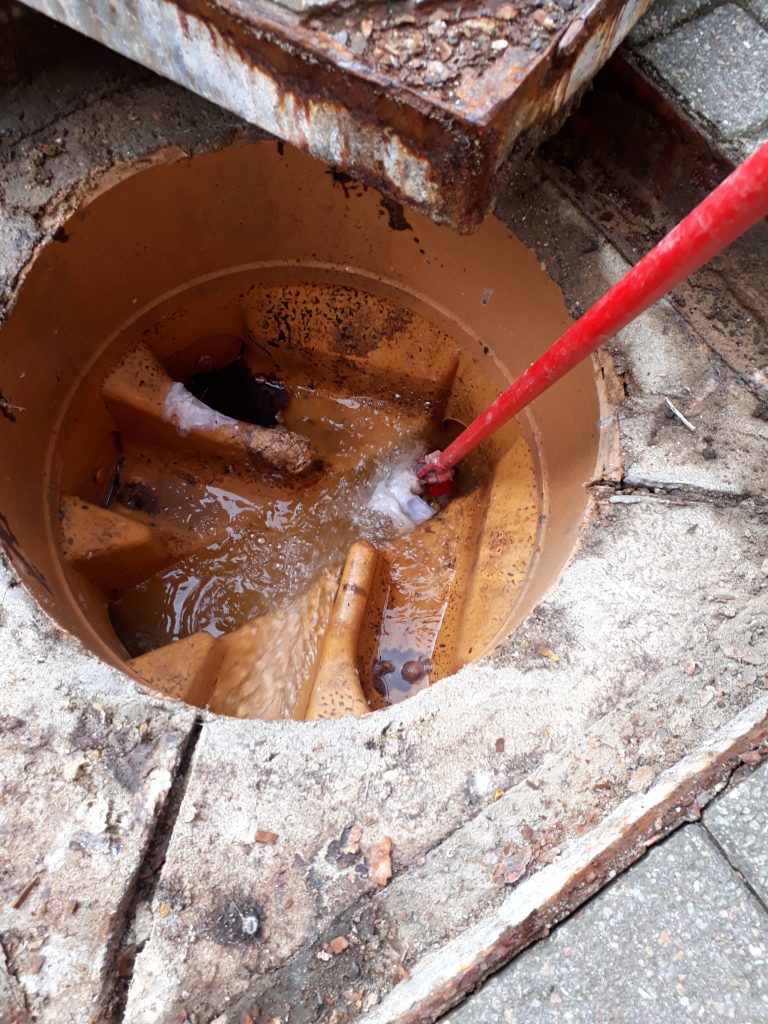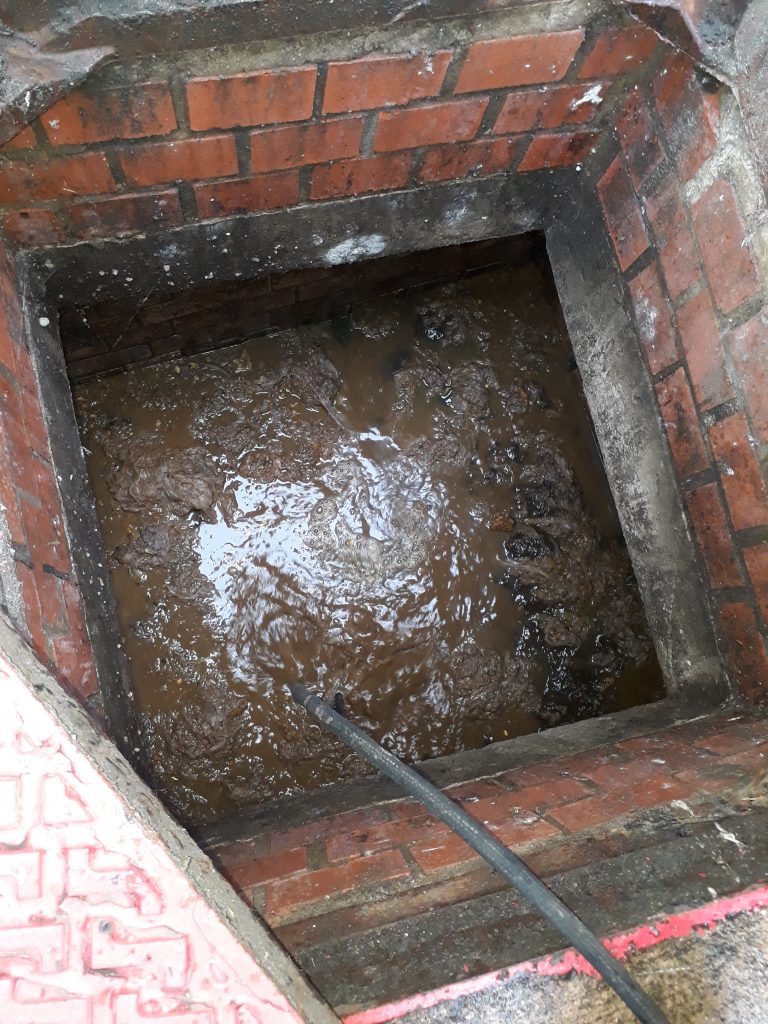How to Use Drain Rods – A Step-by-Step Guide
When your sink, toilet, or outdoor drain becomes blocked, one of the most effective DIY tools is a set of drain rods. Used correctly, they can clear stubborn blockages and get your drainage system flowing again. But if used incorrectly, you risk pushing the blockage further down the pipe or even damaging the drain.
In this guide, we’ll explain how to use drain rods safely, the different types available, and when it’s time to call in professional drainage engineers. If you do lose your rods, please give us a call!
What Are Drain Rods?
Drain rods are stiff, flexible rods that screw together to form a long tool for reaching into drains and pipes. They are usually made of polypropylene or steel with brass fittings, and can be fitted with attachments like plungers, corkscrews, or brushes depending on the type of blockage.
There are two main types of drain rods:
- Universal rods – the cheaper, common type you’ll find in most DIY stores. They screw together quickly but are more prone to unscrewing if rotated the wrong way.
- Lockfast rods – the professional choice. These rods require a spanner to lock each joint in place, meaning they won’t unwind in the drain. They’re substantially more expensive, but far more secure and reliable, especially for stubborn or deep blockages.
⚠️ Cheap fittings warning: Budget rod sets often use attachments that are only held on with two pop rivets. These can break under pressure, leaving parts stuck in the drain. Always check the quality before use.
Equipment You’ll Need
Before you begin, make sure you have:
- A set of drain rods (Universal or Lockfast)
- A plunger or worm screw (corkscrew) attachment
- Sturdy gloves and safety goggles
- Waterproof overalls or old clothes
- A bucket and disinfectant for clean-up

Step-by-Step: How to Use Drain Rods
1. Locate the Blockage
Find the nearest inspection chamber or manhole to the blocked drain. Carefully lift the cover using the correct lifting tool (never force it with bare hands).
2. Assemble the Rods
Start with one rod, attaching the plunger head. As you work, screw on more rods to reach further into the drain. Always rotate them clockwise when tightening – this prevents them from unscrewing inside the drain.
👉 Important: Count how many rods you insert, and count them again when you remove them. This ensures no rods are left behind in the pipe.
👉 Lockfast tip: If you’re using Lockfast rods, secure each joint with a spanner before inserting them. This extra step prevents them from coming undone inside the drain – one of the biggest risks with universal rods.
👉 Use your judgement: For a plunger, if you can’t clear the blockage with one or two rods, don’t keep adding more. Forcing extra rods with a plunger usually won’t help and risks damage. You can use more rods with a corkscrew attachment, but remember there can be a lot of torque on the rods when you rotate them.
3. Insert the Rods
Gently push the plunger into the drain opening. Use a firm but controlled motion to avoid damaging the pipework.
4. Rotate and Push
Rotate the rods clockwise while applying steady pressure. This helps break up the blockage and move debris along the pipe. If you feel resistance, avoid forcing the rods – this can damage the pipe.
- Corkscrew attachment: When using the corkscrew, twist in a clockwise motion only. This ensures the rods stay tight and secure as you work into the blockage.
- Avoid half-moon fittings: These attachments are notorious for snagging on pipe joints and getting stuck. Stick to a plunger or corkscrew for safer results.
5. Flush the Drain
Once the blockage clears, run water through the system to check the flow. You may need to repeat the process several times to fully clear the obstruction.
6. Clean Up
Remove the rods carefully, unscrewing them one by one. Double-check your rod count to make sure all sections are retrieved. Wash down the rods and disinfect them before storing.

Common Mistakes to Avoid
- ❌ Turning rods anti-clockwise – this can cause them to unscrew and get stuck in the drain.
- ❌ Forgetting to count rods in and out – lost rods can create even worse blockages.
- ❌ Relying on cheap riveted fittings – they can snap under pressure, leaving parts stuck in the pipe.
- ❌ Forcing in too many rods with a plunger – if 1–2 rods don’t work, stop.
- ❌ Using universal rods too forcefully – they can easily unscrew without warning.
- ❌ Using half-moon fittings – they can jam on pipe joints.
- ❌ Using drain rods indoors – under sinks or inside toilets they can cause damage.
When Drain Rods Won’t Work
Drain rods are useful for many blockages, but not all. If you notice:
- Repeated blockages every few days
- Bad smells coming from multiple drains
- Water backing up into your home
- Flooding in your garden or driveway
…then the issue may be more serious, such as collapsed pipes, root intrusion, or fatberg build-up. In these cases, professional help is essential. Drainage engineers use high-pressure water jetting, CCTV surveys, and specialist cutting equipment to solve the problem permanently.
Professional Drainage Help in Newport, Cardiff & Monmouthshire
While drain rods can help with small blockages, some drainage emergencies need more than DIY tools. At Drainrod Ltd, we’ve been unblocking drains across Newport, Cardiff, and Monmouthshire since 1977. Our fleet is fully equipped with jetting units, tankers, and CCTV cameras to handle everything from blocked toilets to emergency drains.
If you have lost your rods down your drain (It happens more than you would think!) please don’t hesitate to give us a call to retrieve them, and remedy the situation.
👉 Blocked Drains & Drain Unblocking
👉 CCTV Drain Surveys
Final Thoughts
Knowing how to use drain rods correctly can save you time and money on minor blockages. Always count your rods, avoid risky fittings, and remember to keep all rotation clockwise. Use your judgement on how many rods to insert — overdoing it often causes more harm than good. For the most secure results, Lockfast rods are the professional choice, but if the blockage is severe, repeated, or causing flooding, don’t risk making it worse. Call the experts for a fast, safe, and effective solution.

